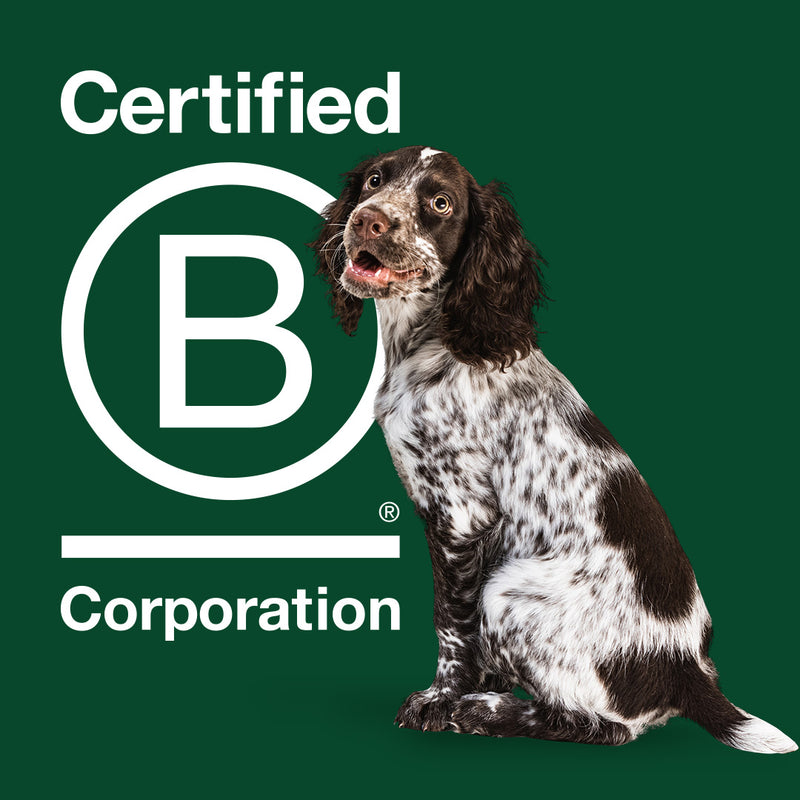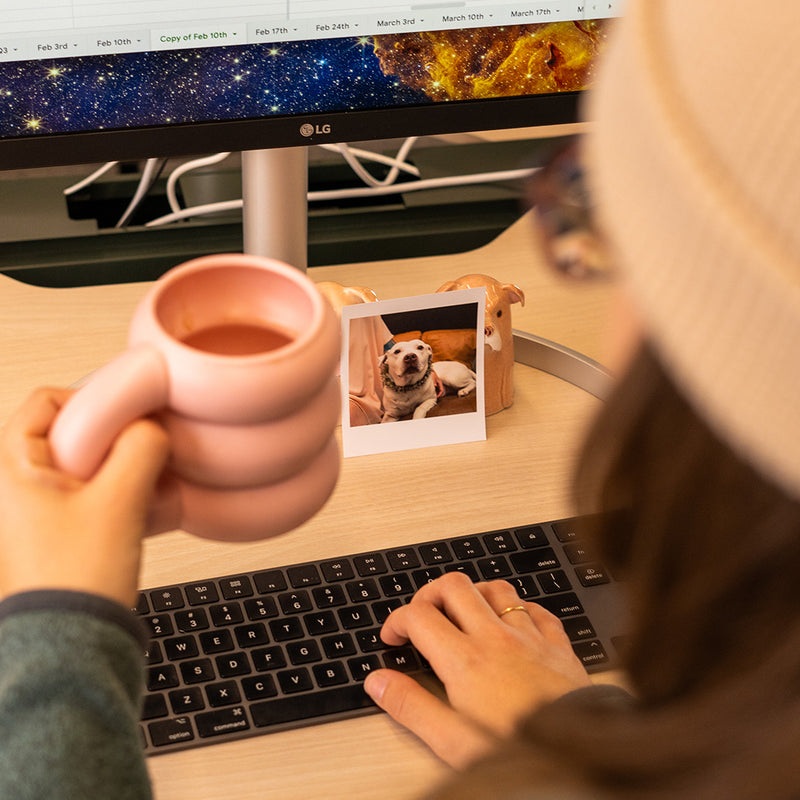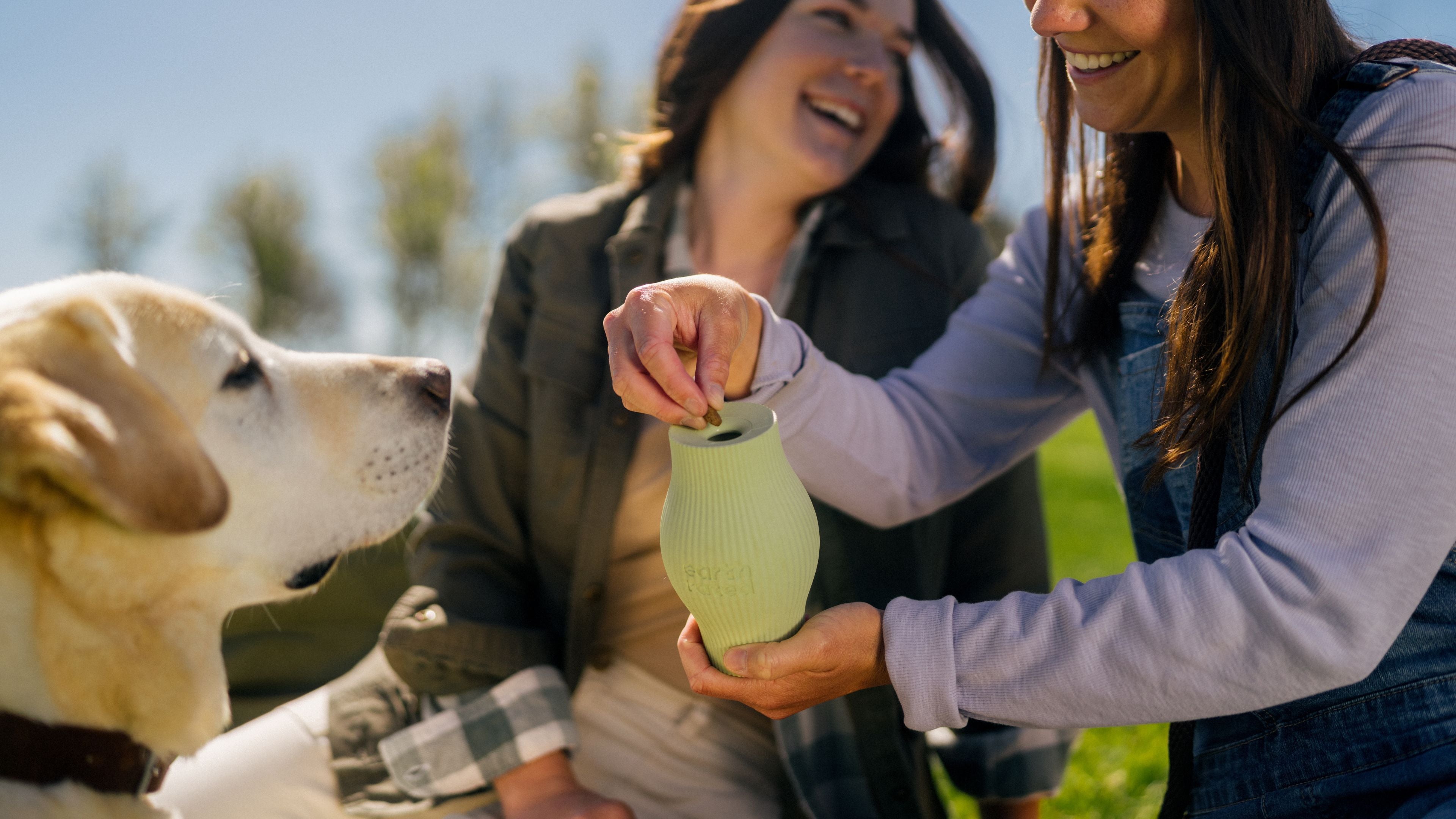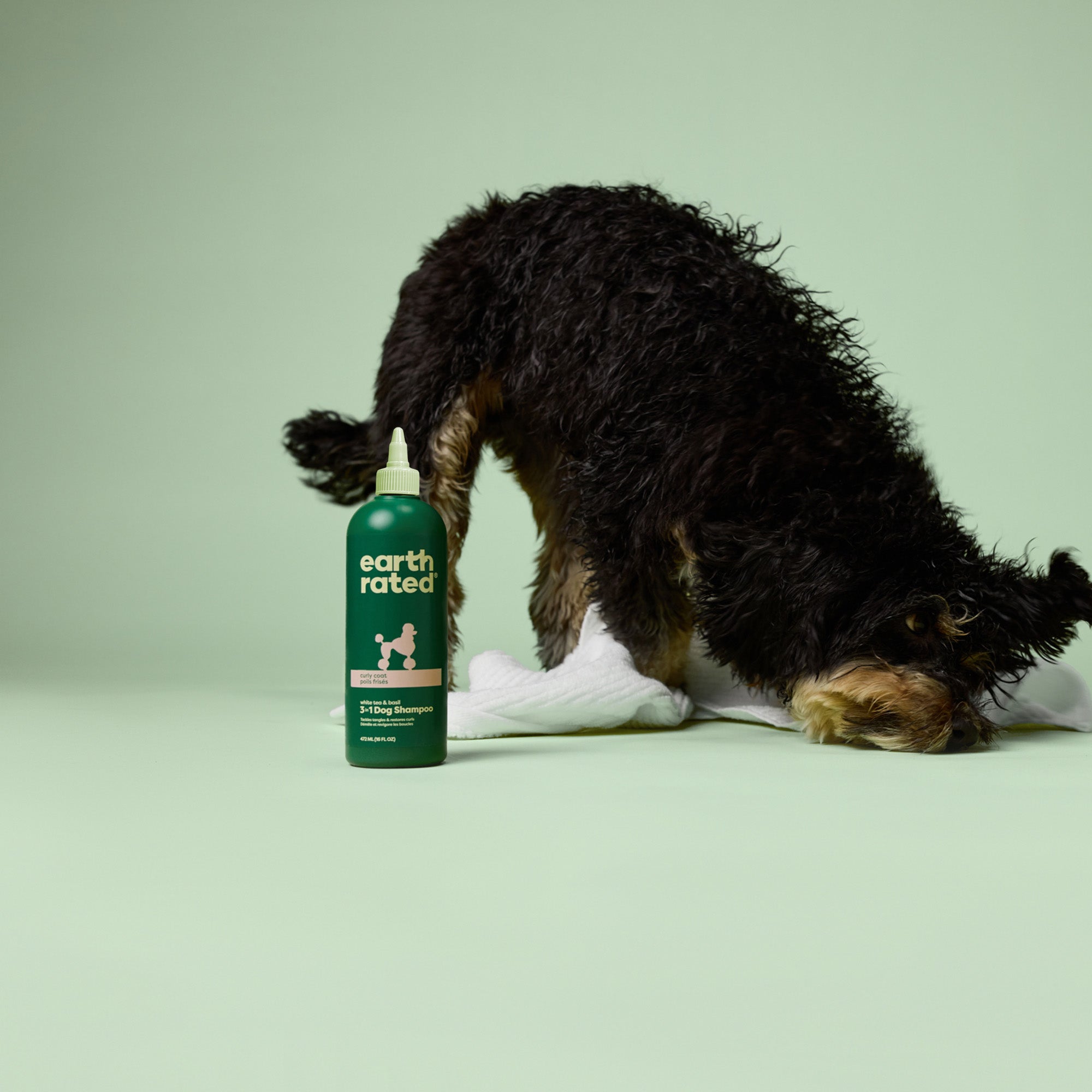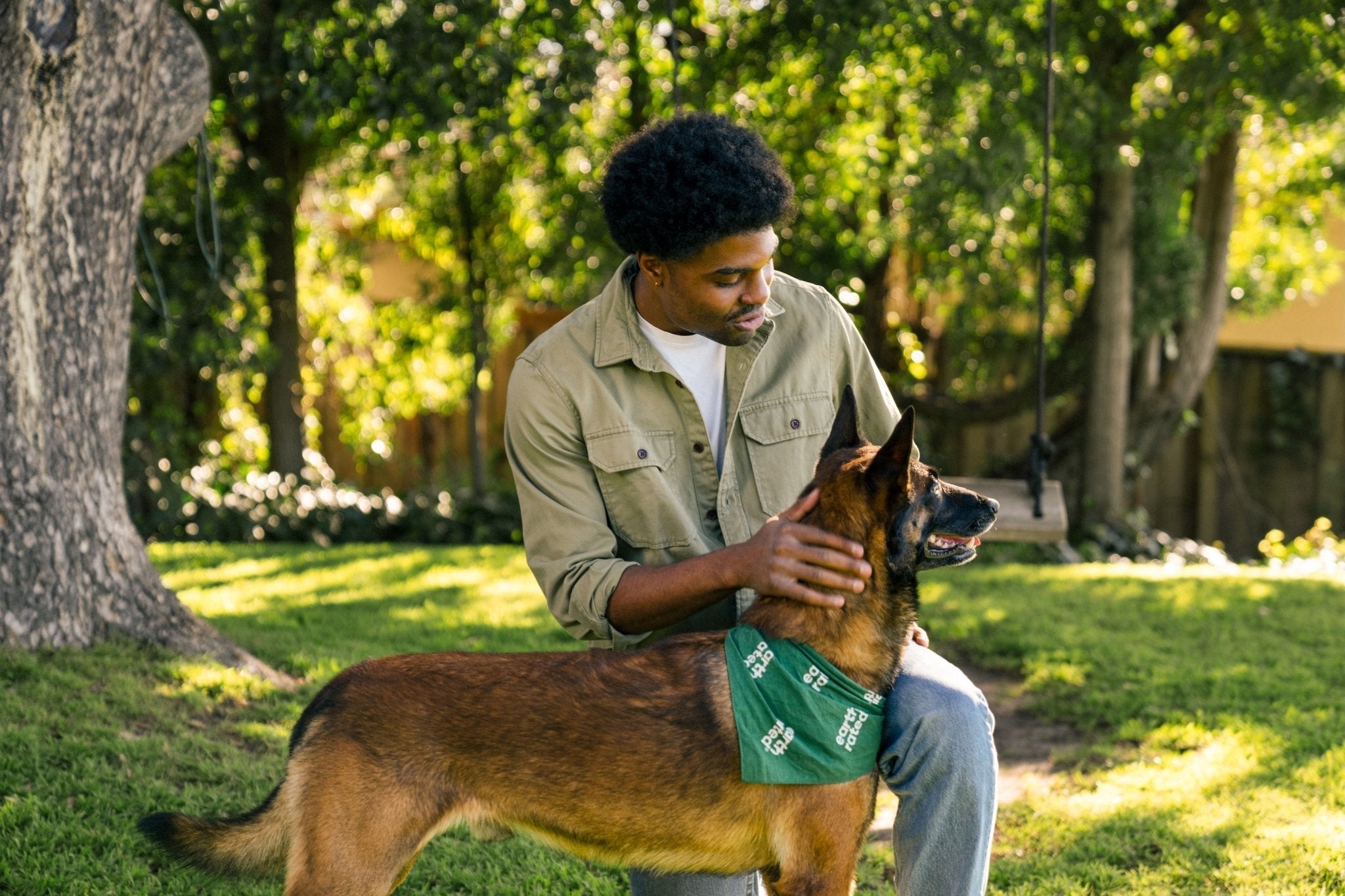Our dogs live very entertaining lives. Sometimes you may even wish you could trade places with them. Rather than daily chores, their days are filled with chasing squirrels (usually unsuccessfully), barking at the neighbours, and napping in sunbeams. So. Much. Napping. 😅 But even dogs living the most exciting lives can succumb to boredom.
And the last thing you want is to have a bored pup on your hands as boredom can often lead to destructive behavior, and in some cases anxiety.
Luckily, interactive dog toys can help keep your dog entertained. These ingenious contraptions stimulate your dog’s mind and body, leading to a happier dog (and a less-destroyed home)! We love that for you.
Why Choose Interactive Dog Toys?
While the ‘ol trusty tennis ball or stuffed animals are fun, they don’t always last long. Interactive dog toys provide a whole other level of engagement. They not only tire your dog’s body but they also stimulate their mind! Here are just some of the amazing benefits they offer:
Mental Stimulation: Just like humans, dogs need regular mental challenges to avoid boredom. Interactive toys are built to encourage problem-solving, which stimulates your dog’s mind.
Physical Exercise: Many interactive toys also encourage movement and play. If your dog is having trouble getting enough exercise, obesity could become a health concern later. Obesity affects almost 50% of dogs so encouraging more exercise through an interactive dog toy can be a fun way to keep them healthy. In fact, increasing exercise is also the most common suggestion by vets to improve dogs' quality of life so the benefits are endless.
Destructive Behaviors: how Aryel Lafleur, a veterinary technician and co-owner of Trop Chien, explains it, “interactive toys provide a constructive way for dogs to keep themselves occupied, reducing the likelihood of barking for attention, rummaging through the garbage, destroying the couch, etc.”
Here’s how interactive toys are different from standard toys:

How to Choose the Right Interactive Toys for Your Puppy
When your dog plays with the right interactive toy, they should become “quiet and/or calm,” explains Ayrel. But what exactly makes something the right interactive toy? Here are some things to consider:
- Size: Interactive toys for large dogs should be able to withstand their big mouths and chewing power. On the other hand, smaller dogs require smaller toys; otherwise, they may have a hard time interacting with them.
- Breed: Some dog breeds may prefer certain toys based on their intelligence and instincts. For example, Golden Retrievers may enjoy toys that encourage them to fetch & retrieve, while Border Collies may prefer toys that really challenge their problem-solving skills.
- Activity Level: If you have a small and calm dog, they might enjoy playing with toys that don't move too much, such as puzzle feeders. On the other hand, if your dog is very active, they may prefer interactive toys that get their legs going, like a dog ball launcher.
- Chewing Habits: Plush toys and toys with small parts are not great for aggressive chewers and dogs that tend to chew through everything.
- Dog Preferences: Your dog probably has their own toy preferences so consider these when choosing an interactive toy for them. For example, dogs with a high prey drive usually love a squeaky dog toy.
Let’s review some specific examples of interactive toys suitable for certain dogs. You can take our toy quiz for help choosing the right option for your pup.
Interactive Toys for Big Dogs
Larger dogs usually need larger, more durable toys:
- Large puzzle feeders: Small puzzle feeders don’t tend to work as well for bigger dogs. Choose puzzle feeders designed for your dog’s size to ensure they can’t tear it apart.
- Durable treat dispenser toy: Look for thick rubber or nylon toys that can be stuffed with yummy food or treats.
- Interactive balls: Consider getting your larger dog a ball with an erratic bounce or a treat-dispensing ball to encourage more activity. Larger dogs often need more exercise so these balls are great for burning excess energy.
Interactive Toys for Small Dogs
It can be challenging to find interactive toys designed for smaller dogs, but here are some options to consider:
- Small fetch toys: There are dog ball launchers that are explicitly designed for smaller dogs. These toys are lower to the ground and don’t throw the ball as far so can be a great choice if you have a small dog who likes to play fetch.
- Treat-dispensing toys: Toys designed to dispense treats are perfect for smaller dogs, as they tend to be less active. These toys often work well inside and can also stimulate your smaller dog while you are away.
- Crinkle toys: Crinkle toys are often not durable enough to withstand a larger dog, but they can work well for smaller dogs. The crinkle noise is great for keeping your dog engaged. Squeaky toys are also a great interactive toy to consider.
Interactive Toys for Aggressive Chewers
If your dog is a tough chewer, interactive toys can be very helpful! According to Aryel, “Puppies have a natural need to chew. Interactive toys significantly decrease biting in puppies, offering them an appropriate item to chew.” Here are two types of interactive toys that work well for aggressive chewers, young or old:
- Treat dispensers: look for versions that are specifically designed for aggressive chewers to ensure your dog won’t destroy the toy in seconds!
- Bully sticks: The edible nature of bully sticks makes them a great interactive toy for dogs that love to chew.
Though bully sticks are less interactive than, say, a dog ball launcher, chewing is actually a very cognitive-friendly activity for dogs, so chew toys and bully sticks can also keep your dog mentally stimulated and engaged.
Not to mention, chew toys have also been shown to help dogs with separation anxiety.
Interactive Toys for Dogs Home Alone
When home alone, dogs are often prone to boredom. Boredom can lead to undesired behaviors, like chewing and digging. When choosing an interactive toy for a home-alone dog, try to find something long-lasting that can provide plenty of entertainment.
- Food-dispensing puzzle toys: Dogs are often very food-driven, so food as a constant reward for interacting with the toy can increase their focus. Slow feeders and puzzles with varying degrees of difficulty are available, so you can choose one appropriate for your dog’s ability level.
- Lick mats: Lick mats are a specific type of puzzle toy that doesn't require much mental focus from your dog. You can smear a delicious treat on the mat, keeping your pup busy licking it while you're away. These toys are ideal for pups who like to explore things with their mouths.
- Treat-stuffed enrichment toys: We highly recommend chew toys that can be stuffed. These chew toys naturally hold a dog’s attention with the promise of food. They can be held and gripped just like a bone, but filled with yummy frozen peanut butter or treats.
The Different Types of Interactive Dog Toys
There are now a whole host of interactive dog toys for you to choose from. You will be sure to find one that’s perfect for your pup!
Treat-Dispensing Toys
These toys have been designed to boost your dog's problem-solving skills. Once your dog figures out the puzzle, they will be rewarded with hidden treats or kibble. There are various types of treat-dispensing toys available, ranging from simple treat-holding balls to intricate puzzles that require your dog to manipulate levers or small doors. It’s important to choose an option that aligns with your pet's abilities.
You can also use treat-dispensing toys for slow feeding if your dog tends to gulp their food.
Puzzle Toys
Puzzle toys can also contain treats but they focus on forcing your dog to use their problem-solving skills to reveal the treats. These toys are more complicated than moving a ball around to get the treats out.
Aryel explains, “It's crucial that the toy is not overly challenging and provides frequent reinforcement to keep the dog engaged. If a puzzle is too difficult, dogs may become bored or discouraged, leading them to lose interest.”
Puzzle toys are very mentally stimulating, helping to reduce boredom and anxiety. They can also promote cognitive development, especially in more intelligent breeds.
Fetch Toys
Interactive fetch toys are perfect for dogs who love to play but can tire out their owners quickly. Dog ball launchers are one of the most interactive dog toys you can get. They launch the ball for your dog to fetch but also require your dog to spit the ball back into the toy before it can launch it again. Another option is a fetch toy with an erratic bounce that is sure to keep your dog on their toes.
Earth Rated’s Interactive Dog Toys
The Treat Toy
This wobbly, treat-dispensing toy is one of the easiest ways to entertain your dog. It’s made of natural rubber and is designed to keep your dog interested through the promise of treats.
How to Use: Fill the toy with your dog’s favorite treat and watch them have a blast trying to get them out. It can also be used as a slow feeder during mealtime.
The Tug Toy
This durable tug toy is made of natural rubber and is made for dogs who love a good ol’ fashioned game of tug. The dual handle allows for interactive play with you or with other dogs. This toy is perfect if you have two dogs in the home. Alternatively, this tug toy is great for teething puppies who want to chew on something.
How to Use: Grab one end of the toy and encourage your dog to grab the other.
The Fetch Toy
This fetch toy is made from responsibly sourced natural rubber for more active dogs. Its unique shape gives it an erratic bounce to keep your dog active and engaged. The bright yellow color makes it easy for your dog to spot, even in tall grass.
How to Use: Throw this fetch toy for your dog to chase and retrieve. Its unpredictable bounce makes it twice as fun to play with.
The Enrichment Toy
This toy has a unique shape that allows you to fill it with treats. Plus, it’s top-rack dishwasher-safe (which makes it much easier to clean up peanut butter, trust us).
How to Use: Fill the toy with your dog’s favorite treats and let them work at licking it up - you can even toss it in the freezer for a frozen snack.
Tips for Enhancing Playtime and Bonding
Here are some quick tips to keep your dog having a great time with interactive toys:
Vary the Difficulty: Choose toys that offer different difficulty levels to keep your dog engaged. Easier puzzles may be better when they’ve had a hard day, but more complex puzzles may be better when they're looking for something to do.
Make it Rewarding: Offer treats and rewards when they complete a task or puzzle. Toys that provide a built-in reward work great.
Keep it Short: It’s best to not overwhelm your dog with long play sessions. Short sessions help them stay focused.
Ready to discover the perfect interactive toy for your dog? Earth Rated has a wide selection of engaging toys for you to check out.
FAQs
Are Interactive Toys Good for Dogs?
Interactive dog toys provide tons of benefits for dogs. They offer physical stimulation to help your dog stay fit, mental stimulation to prevent boredom, and distractions to alleviate anxiety.
What Toys Will Keep a Dog Busy for Hours?
Interactive toys are key to keeping your dog busy for hours. These keep a dog both mentally and physically stimulated, often with some sort of reward for playing. Use a variety of different interactive toys for the best results.
What is the Best Dog Toy for Mental Stimulation?
Food puzzles that require a dog to push a lever or open a door are great for mental stimulation. Just be sure to choose a toy that is in line with your dog’s capabilities. Too-complex toys can easily lead to frustration, while too-easy toys can create boredom.



